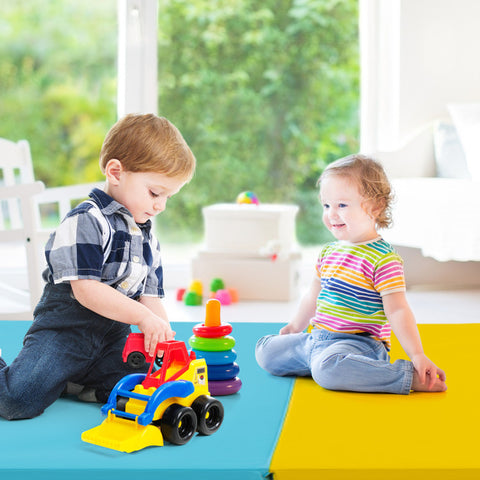News
Best Thickness for Gymnastics Mats Based on Skill Level: A Complete Guide for Safe Practice
When choosing a gymnastics mat, thickness matters just as much as size, brand, or material. The best thickness for gymnastics mats based on skill level can directly impact safety, confidence, and performance. Whether you’re shopping for beginner kids, intermediate tumblers, or advanced gymnasts, selecting the right mat thickness ensures proper shock absorption, reduces injury risk, and supports the demands of each skill level. In this article, we’ll break down the ideal mat thickness for beginners, intermediate, and advanced athletes, helping you make the best decision for home or gym use.

Why thickness in gymnastics mats matters
Mat thickness plays a vital role in how much impact is absorbed when landing, rolling, or tumbling. Thicker mats typically offer more cushioning and are great for activities with higher-impact landings, while thinner mats provide stability and are ideal for advanced skills where balance and control are key. The wrong mat thickness can either hinder performance or increase the risk of sprains and joint injuries.
Ideal gymnastics mat thickness for beginners
For young children or beginner-level gymnasts just starting with forward rolls, handstands, or cartwheels, mats with a thickness of 1.5 to 2 inches are generally recommended. These mats provide soft, forgiving landings and are usually made from low to medium-density foam. Thicker crash mats, around 4 to 6 inches, are also useful when practicing new skills or dismounts. Folding panel mats around 2 inches thick are perfect for basic home use and can be easily stored.
Recommended thickness for intermediate gymnasts
Intermediate gymnasts working on more dynamic moves like back handsprings, aerials, or front tucks need better joint support and a balanced surface. Mats that are 2 to 3 inches thick with higher-density foam are preferred. These offer a balance of firmness for push-off and softness for impact absorption. Tumbling passes benefit from roll-out mats or carpet-bonded foam that’s approximately 1.5 inches thick but used in combination with sub-floor padding for added protection.
Best mat thickness for advanced gymnastics training
Advanced gymnasts require mats that offer stability over cushion, as precision and speed become more important. Training facilities often use competition-style mats that are 1.25 to 2 inches thick but made of high-density foam or layered padding systems. For vaulting, bar dismounts, or beam work, you’ll often see landing mats or crash pads around 4 to 8 inches thick, offering targeted support where needed, especially for high-impact landings.
Using multiple mat layers for versatility
A helpful tip for all skill levels is to layer gymnastics mats based on the activity. For example, combining a thinner panel mat on top of a crash mat allows athletes to perform drills and gradually build confidence. This approach gives gymnasts the flexibility to adjust the surface depending on their comfort and skill development.
Choosing the right gymnastics mat for your needs
Aside from skill level, also consider:
- Age and body weight of the user
- Floor type (carpet, hardwood, outdoor)
- Frequency of use
- Space and storage options
Look for reputable brands like Tumbl Trak, Dollamur, and Resilite that offer a range of mat thicknesses with proper certifications for safety and durability. Make sure the foam is high-quality and doesn’t compress too quickly over time.
Conclusion: what’s the best thickness for gymnastics mats based on skill level?
Choosing the best thickness for gymnastics mats based on skill level depends on the gymnast’s experience, age, and the types of moves being practiced. Beginners need soft cushioning, intermediate gymnasts need a balanced surface, and advanced athletes require dense mats that offer firm landings. Whether training at home or in a gym, investing in the right mat thickness can make a big difference in safety and progress.

